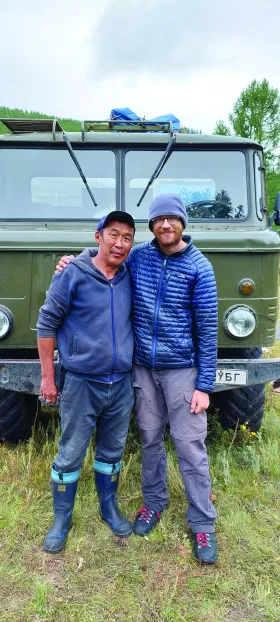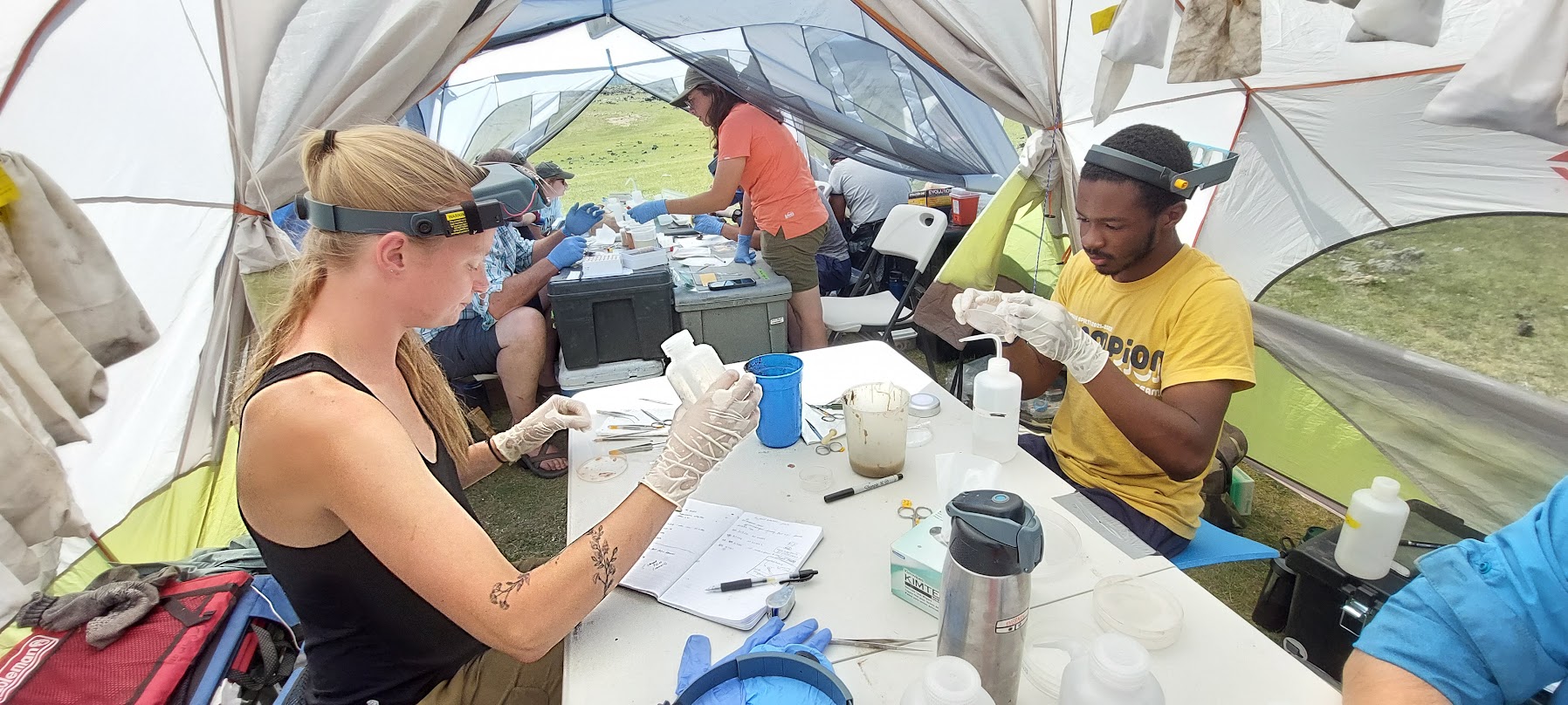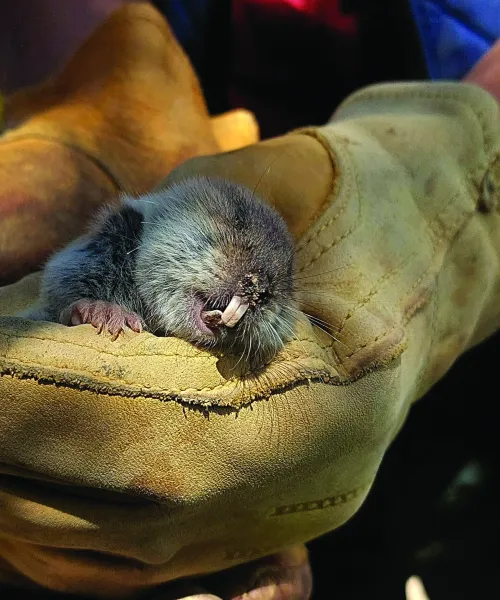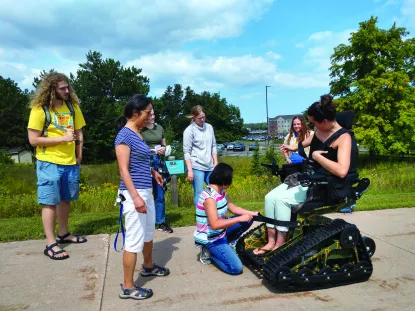
Mammals in Mongolia
What could mammals in Mongolia teach us about mammals in Michigan, or America? According to Biology Professor Kurt Galbreath, whose research is focused on understanding the relationship between small mammals and their parasites, “The big goal is to document biodiversity, so we have a baseline of data, for future researchers to compare. Nothing occurs in a vacuum; it all has historic connections. We also need to understand what causes parasites to move from one creature to another. Maybe species are switching locations, which can lead to pathogen interchange, from the animal or from the location. When you mix these interactions up is when you get novel pathogens, which could sweep through that new resource. This is exactly what happened with Covid. There was likely a bat that had this virus, and when it was brought into close proximity to people, away it went. Our lab doesn’t work with human pathogens, but the fundamental principles are the same.”
Galbreath and biology master’s degree student Kenzie Grover spent six weeks this summer in three diverse locations in Mongolia, collaborating with students and faculty from three U.S. universities, the National University of Mongolia and the Mongolian University of Life Science School of Veterinary Medicine. He and NMU students had previously visited in 2015 and 2016 and were able to observe and measure changes from that time. The trips were funded by the National Science Foundation.
It’s really important to us in biology to create authentic research experiences for our students, which can be life changing.
The changes he has seen in that short period of time affect more than shrews and rabbits. Mongolia is between China and Russia. China has invested heavily into the “new Silk Road,” known as the Belt and Road Initiative, consisting of roads, railroads and pipelines, so the country can access natural resources in not only the vast and relatively untouched and undamaged steppes and mountains of Mongolia, but across all of Asia. “Before that takes off, it's critical to have a baseline of biodiversity, which is also important for understanding effects of climate change,” Galbreath said, adding that they witnessed a gazelle that had run into one of the new fences dividing the previously wide open spaces bleeding to death, “a poignant vignette” of drastic changes happening that are particularly difficult for the local nomadic people.
The researchers collected specimens representing several dozen species of small mammals, which will be preserved as specimens in the Museum of Southwest Biology at the University of New Mexico. One included a rare Hoffman’s pika, only found in two mountain ranges in Mongolia and Siberia, which will join a single individual collected in 2016 as the only specimens of this species preserved in North American museums. Parasites, skin, skeleton, blood, and tissues were preserved from every collected mammal, maximizing their value to science. Researching and preserving specimens in museum collections, Galbreath said, “is a moral imperative. We need to share these with the broader scientific community so that more cool science can be done.”
Another imperative was teaching Mongolian students and researchers about the methods and tools scientists use so they can take ownership, monitor changes and build their own collections. “To be able to see Kenzie demonstrating our methods and building relationships was really gratifying,” said Galbreath. They hope to continue the cross-continental relationship online.

“It’s really important to us in biology to create authentic research experiences for our students, which can be life changing." He recalled that after teaching Mongolian students, Alex Bott ’16 BS, discovered her passion for teaching and is now an educator.
According to student Kenzie Grover, “I'm not very good with words, yet I could surely go on for hours about my experience in Mongolia. The most precious aspect of the experience is how it reminded me to cherish the small, simple moments of being wholly immersed in an experience; whether that is sifting through intestinal contents or hiking through the woods on a rainy morning.”
Photos: NMU Biology Professor Kurt Galbreath with Mongolian colleague Buyaa, who kept the crew going by driving the Soviet-era GAZ-66 field vehicle seen in the background.
NMU student Kenzie Grover working with international colleagues on biological specimens.


New Wheelchair Increases Field Accessibility
NMU has obtained its first off-road wheelchair, the ActionTrackChair NT. It is designed to allow biology students with either permanent or temporary mobility disabilities to still take part in field labs. “In the past, these students typically had to forgo participating in labs in the field because the department lacked equipment to facilitate their inclusion…so they missed out on the fun stuff,” said Interim Department Chair Jill Leonard. “The trackchair is a highly flexible model that accommodates a wide variety of body sizes while still being able to traverse relatively narrow trails. It’s even tricked out in NMU colors! It can make its way through puddles, snow, over moderate size logs, and up and down quite challenging slopes. Finally, we are able to get all our students out to the wild to do their biology!”
In addition, the department was able to purchase an enclosed trailer for the TrackChair that can be easily pulled with their truck or one of their vans. A collaboration between the Biology Department, Office of the President, and Disability Services made this happen.
Photo: Biology Lab Manager Jingfang Niu (left) supervises a training session with the new TrackChair.
